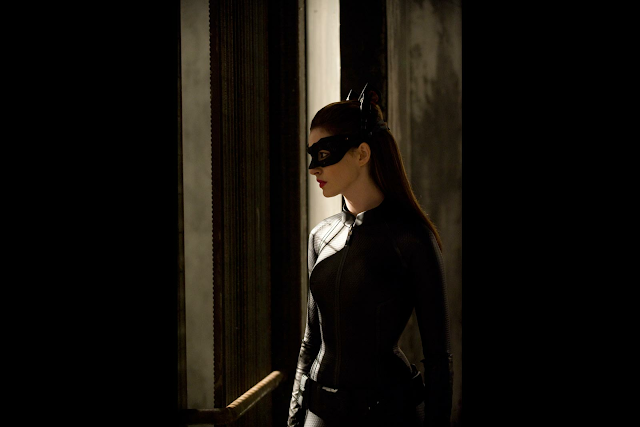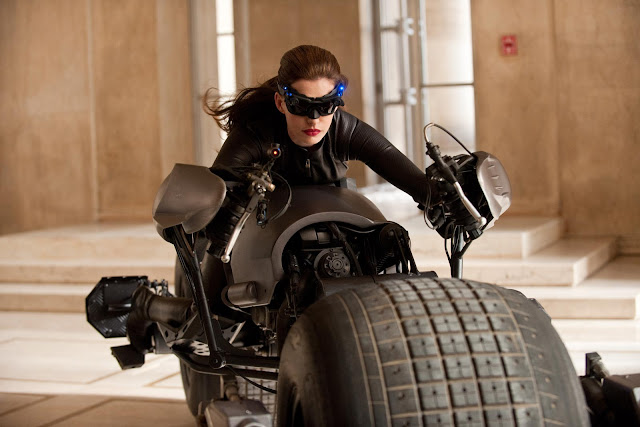Lorraine Toussaint on ‘Middle of Nowhere,’ ‘Scandal’ and the Oscars by Allison Samuels via The Daily Beast
Queer Lead Sophia Swanson Makes MTV’s ‘Underemployed’ Worth Watching by Riese via Autostraddle
The radical notion that women like good movies
Lorraine Toussaint on ‘Middle of Nowhere,’ ‘Scandal’ and the Oscars by Allison Samuels via The Daily Beast
Queer Lead Sophia Swanson Makes MTV’s ‘Underemployed’ Worth Watching by Riese via Autostraddle
Megan‘s Picks:
How to Increase Media Diversity: 3 Lessons from the London Feminist Film Festival by Spectra via Racialicious
Female Trouble: Why Powerful Women Threaten Hollywood by Sasha Stone via Awards Daily
Why Having Only Strong Girl Heroines Is Not Enough by Melissa Silverstein via Women and Hollywood
Matt Lauer Is Gross, Anne Hathaway Kicks Slut-Shaming’s Ass by Jos Truitt via Feministing
Women of Color Talk Back: “Birthday Song” via FAAN Mail
Shonda Rhimes On Why She Has Many Gay Characters on Her Shows by Melissa Silverstein via Women and Hollywood
The Female Pilots Who Were Cut From ‘Return of the Jedi’ and the Future of Star Wars by Alyssa Rosenberg via Think Progress
Why Talking About Character Gender Still Matters (Even Though It Shouldn’t) by Becky Chambers via The Mary Sue
Serena Williams Is Not a Costume by Jessica Luther via Speaker’s Corner in the ATX (scATX )
‘The Mindy Project’: The Best Show You’re Not Watching by Molly McCaffrey via I Will Not Diet
The Censorship of ‘Mean Girls’: What Was MTV Thinking? by Ramou Starr via Hello Giggles
If Women Ran Hollywood… by Karensa Cadenas via Women and Hollywood
What have you read (or written) this week that you’d like to share?
Kale and dust. Hummus and radishes. Two squares of dried oatmeal paste a day.
 |
| Anne Hathaway as Fantine in Les Miserables |
 |
| Patti LuPone as Fantine, 1985 London production |
| Randy Graff as Fantine, 1987 Broadway production |
 |
| Sierra Boggess as Fantine, current West End production |
 |
| Brad Pitt in The Curious Case of Benjamin Button |
 |
| Skinny Steve Rogers in Captain America: The First Avenger |
 |
| Anne Hathaway as Catwoman in The Dark Knight Rises [source] |
While The Dark Knight Rises has had a more mixed reception than Christopher Nolan’s previous two entries in his Batman trilogy, everyone, even President Obama, can agree that Anne Hathaway’s Catwoman was the best thing about the movie. Slate’s Alyssa Rosenberg calls her, “the best Catwoman ever to grace the big screen.”
And I loved her too. The Dark Knight Rises‘s Selina Kyle is smart, sexy, and complex in her morality: the trinity of characteristics that unites all incarnations of Catwoman. The other details of Selina and her alter-ego Catwoman shift constantly (a fate common to comic book characters). She’s been an amnesiac flight attendant abuse victim (in the Gold and Silver Age comics in which she first appeared), a wealthy socialite who burgles for the thrill of the hunt (how she was portrayed in my introduction to the character, Batman: The Animated Series), a meek secretary transformed into a badass vigilante after her apparent murder by her powerful boss (in Batman Returns), and, well, whatever Halle Berry was reduced to doing with the character (who, just to be clear, was not Selina Kyle, but rather Patience Phillips, and I will waste no more words on a character and film that is best forgotten). As Rosenberg puts it in her Slate piece, “Catwoman has, in the past, been a rich well for explorations of female trauma.”
So it was inevitable that Selina Kyle be portrayed as a sex worker, at least once Frank Miller got his hands on her. Christopher Nolan’s Batman trilogy has always been transparently inspired by Miller’s seminal comics Batman: Year One and The Dark Knight Returns. The former series first introduced Selina Kyle as prostitute:
| Sex worker Selina Kyle in panels from Frank Miller’s Batman: Year One [source] |
And over the next twenty years or so of DC comics, the prostitute origin story would be hinted at, overtly dropped, slyly repackaged, forgotten, and popped back in at the whims of various comic book writers. Brian Cronin provides a thorough overview of the waxing and waning of this storyline in his Abandoned An’ Forsaked column. When it was announced that Hathaway had been cast as Selina Kyle in The Dark Knight Rises, speculation went wild regarding which Catwoman we’d get.
As it should be, The Dark Knight Rises offers a unique take on the character. And it stays cagey about her life’s details and origin story. But watching the film, I inferred that they were incorporating the sex worker background for the character. On the ride home from the theater I mentioned it to my husband, who is not a comic book reader, and he was bewildered how I had gotten that impression.
[SPOILERS for The Dark Knight Rises FORTHWITH]
As a comic book fan, I came in with the expectation that this movie’s version of Selina Kyle might be a sex worker. Because I knew Selina Kyle had been portrayed as one, most notably by Frank Miller, whose work has been so influential on the trilogy. So when Anne Hathaway’s Kyle seduces and absconds with a Congressperson (to provide herself with cover when she makes an illicit exchange, we discover) I figured she was doing this in the course of her business.
As that deal goes down, another character is introduced: Selina’s friend, played by Juno Temple, and according to IMDb named “Jen.” I don’t recall her being addressed by name in the film, but as soon as I saw her I thought to myself, “Oh, hey, it’s Holly Robinson!”
| Holly Robinson as drawn by Cameron Stewart in Catwoman Secret Files [source] |
Holly Robinson was created by Frank Miller in Batman: Year One, a fellow sex worker living with Selina Kyle. The appearance of that character, even though they’ve given her another name, signaled to me this character was meant to be in line with Miller’s Selina Kyle, a sex worker.
There’s also an offhand reference to Kyle living in “Old Town,” which I’ve never encountered in Batman comics (although there are many thousands I’ve never read, so maybe I am missing something) but which instantly called to mind the prostitute-run red light district of another Frank Miller comic, Sin City.
Selina Kyle’s primary motivation throughout The Dark Knight Rises is acquisition of the “Clean Slate,” a bit of technology that will erase her record, even her very existence, from the world’s databases, allowing her to escape an unspecified past where “she did what she had to do to survive.” Her past could be anything. It could merely be the thieving she’s clearly so adept at. But Kyle very pointedly shows no shame about her burgling, wearing Martha Wayne’s stolen string of pearls while dancing with Bruce at a gala, for example. It stands to reason there is something else she is running away from.
If you accept that The Dark Knight Rises‘s Kyle has a past or present as a sex worker, unfortunately the dynamic character seems much less innovative and much more like yet another iteration of the trope of the Hooker with the Heart of Gold.
The stock character of the Hooker with a Heart of Gold is problematic, even from a sex-work-positive feminist perspective, because the trope itself is not sex work positive. These characters are meant to be interesting because they are good “inside” even though they do “bad” things. The viewer is allowed to be titillated by the character’s occupation without needing to feel as though they condone it. And because hookers with hearts of gold are so often “saved” by men, it plays to a variety of male fantasies beyond women as commodities: that women need them; that women are “correctable.” The trope also reinforces traditional gender roles by masculinizing work for pay, often giving the hookers with hearts of gold tough, emotionally cool exteriors on the job (like men!) that when cracked (by a man!) show their soft, compassionate, womanly true self.
As we have with Selina Kyle in The Dark Knight Rises, who steals and betrays and displays a general disdain for everyone she speaks with in the first half of the movie (other than Holly Robinson’s stand-in). But somehow Batman cracks that ice, first getting Selina Kyle to display emotional vulnerability, and finally inspiring Catwoman to heroically help save the same Gotham she’d been keen to abandon after helping it fall to anarchy. When we spot her casually dining with Bruce Wayne in Florence at film’s end, it’s easy to imagine she’s given up her criminal ways: another soiled dove lifted to grace by a good man.
 |
| Anne Hathaway as Catwoman, in hero-mode on the Bat Pod. [source] |
Even though I just wrote it, I find this summary of The Dark Knight Rises‘s arc for Selina Kyle overly reductive, and Anne Hathaway’s phenomenal performance in the role nuanced and charismatic enough that it elevates the material. Which is why I don’t so much object that The Dark Knight Rises invokes the trope of the Hooker with a Heart of Gold, I just mind that it does so covertly. It weakens the film’s ability to twist the trope and present a feminist take on it, and wastes an opportunity to give the world an iconic, heroic, feminist character who does or did sex work.
So it doesn’t bother me that The Dark Knight Rises possibly included sex work in the character background of its Catwoman, but it bothers me that they didn’t commit to it. The film signals dog whistles to comic book fans and enable the character and movie to enjoy all the male-id-pleasing benefits of the Hooker With a Heart of Gold trope, without actually having to go to all the trouble of crafting a modern and respectable portrayal of the sex industry in a major summer blockbuster. It’s lazy, even cowardly, and Catwoman, Anne Hathaway, and us movie-watchers all deserved better.
—
Robin Hitchcock is an American writer currently living in Cape Town, South Africa. She had to take the long way home for weeks while The Dark Knight Rises filmed in her neighborhood in Pittsburgh.